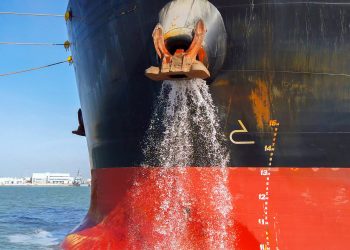IMO Greenhouse gas regulations: Is it over yet?
Earlier this month the IMO adopted the first-ever greenhouse gas (GHG) regulations to be applied in the marine industry. It is considered the first industry wide global agreement. For many years shipping has been totally unregulated in terms of Greenhouse gas emissions and many within the industry still are not aware of the fact that shipping and aviation have been left out of the Kyoto protocol.
The IMO legislation due to be implemented within the next 18 months covers all oceangoing vessels above the 400 tons line. All vessels need to be equipped with a new certificate on Energy Efficiency, a vessel specific Energy Efficiency Management Plan (SEEMP) that will cover all the energy efficiency initiatives onboard and the new vessels, built after 2013 need to be attached with a new index called Energy Efficiency Design Index (EEDI) to measure compliance.
Ships built in or after 2013 will have to improve their efficiency by 10 percent; starting in 2020, new ships will have to be at least 20 percent more efficient than today’s new ships; and after 2024, new ships will have to be at least 30 percent more efficient. Despite the fact that nominally the new mandatory measures will enter into force on January 1, 2013, developing countries will be able to waive compliance until 2019, due to late changes to the proposal that create extra time for technology transfers to occur.
In real world terms, ship operators should save $5 billion in fuel costs in 2020 and the regulations are estimated to lead to GHG reductions of 45-50 million tons/year by 2020. This is an important step forward, and certainly sends a strong signal throughout the shipping world that it is time to find ways to reduce emissions and fuel costs, while increasing overall ship efficiency.
Unfortunately the job is not finished for a number of reasons:
First, IMO is not the sole regulator in the world. The European Commission appears to remain on track to add their own steps to reduce GHG emissions from ships, including a possible carbon tax or extending its Emissions Trading System to the shipping sector too.
Second, the EEDI arrangement covers only new ships, and doesn’t apply to existing ships. According to the Carbon War Room, including existing ships in the program would save another $45 billion in fuel costs annually and would avoid 220 million tons of CO2 emissions in 2020.
Third, ports and other key stakeholders are expected to take steps to towards making most efficient ships more attractive due to the public trend/momentum. For example there are at the moment a number of U.S. ports that provide incentive programs to reduce air pollution in their range (including e.g., lower sulfur fuels, voluntary speed reduction programs, etc.). In the months and years to come this stakeholder drive will create new market demand for the most efficient ships.
Overall the new IMO legislation is certainly a significant step ahead and it is a bold move despite the lack of consensus in the latest MEPC. It is a glorious task to drive a number of parties towards a resolution that received the support of more than 80 percent of the IMO’s member states.
As a result the industry should stay focused and proceed with the implementation of these GHG regulations immediately. It is less than 18 months left for implementation, a very tight deadline for all operators and classification societies with a possible bottleneck ahead, such as the ISPS one.
It should also be noted however that the headache is not over yet. Someone should watch out for further developments in way of EU, USA and maybe some other states in the near future
Apostolos Belokas
Principal Consultant & CEO, IBS Marine Consulting Group
Managing Editor, Safety4Sea



























































